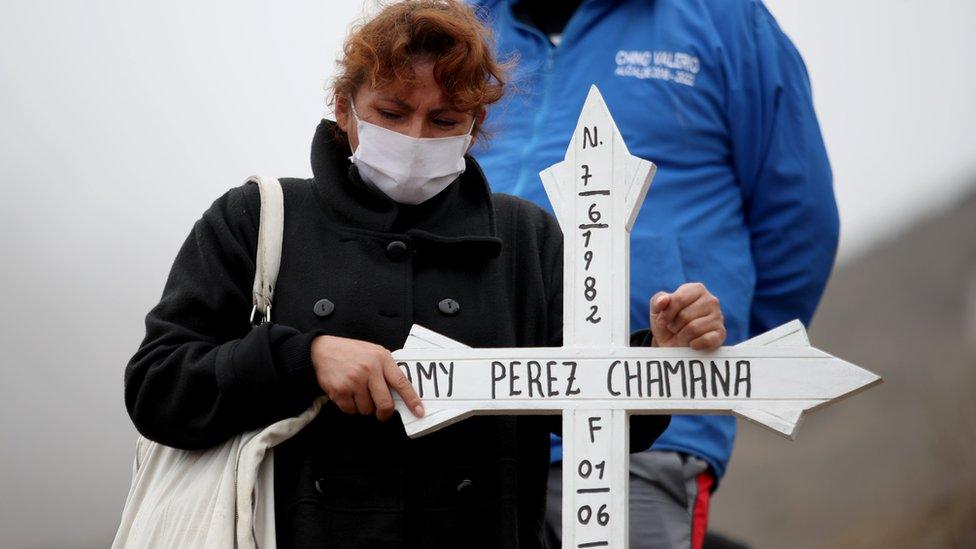Machu Picchu reopens after eight-month Covid closure
- Published
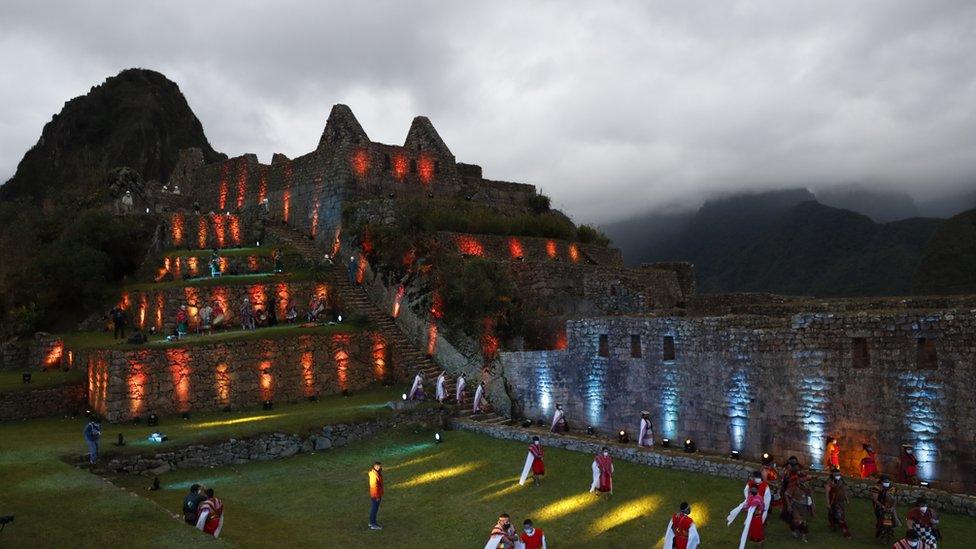
Officials held a special ceremony as the site reopened
Machu Picchu, the ancient city high in the Andes mountains, has reopened after nearly eight months of closure due to the coronavirus pandemic.
Peruvian authorities organised an Incan ritual to thank the gods on Sunday as the major tourist attraction once again allowed visitors.
But numbers will be restricted to just 675 tourists a day for safety reasons, around 30% of previous capacity.
The citadel was designated a Unesco World Heritage site in 1983.
Rediscovered in 1911 by a US explorer, the site is the most recognisable ruin from the Inca Empire, which dominated the Andes from the 1430s until the 1530s.
Archaeologists believe Machu Picchu, meaning old mountain in Quechua, was built as an estate in the 15th century for the Incan emperor Pachacuti. It was abandoned a century later when Spanish invaders conquered and colonised the region.
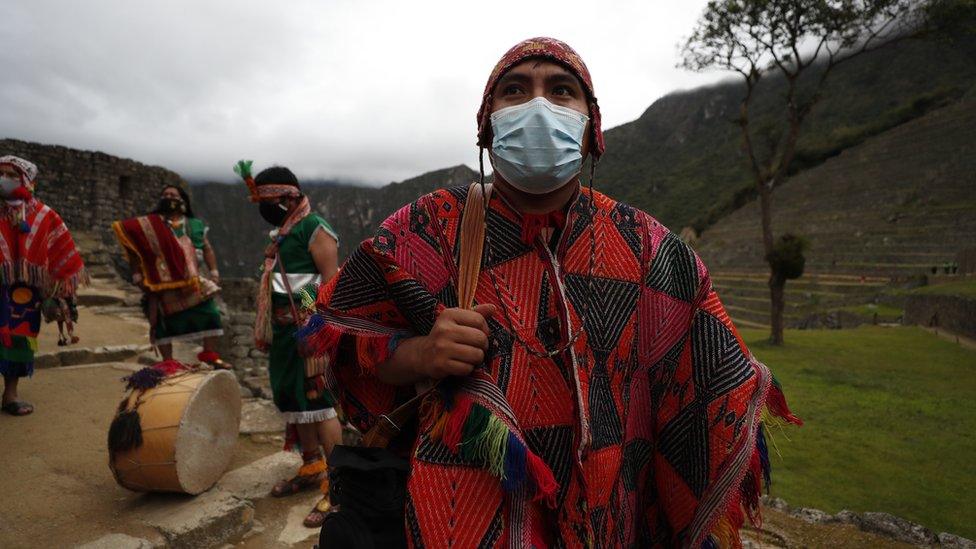
People dressed in costumes for the ceremony

Authorities also put on a special light show at the event
Now it is a major draw for Peru's tourism industry. Tens of thousands of people in the mountainous Cusco region rely on visitors for their livelihoods and have suffered due to the coronavirus lockdown closure this year.
Reporters and tourists arrived for the ceremony on Sunday morning after a 90-minute trip from the Incan village of Ollantaytambo.
"Today, Machu Picchu reopens," Foreign Trade and Tourism Minister Rocio Barrios said in a speech. New health and safety protocols show they are opening "with responsibility and great prudence", he added.
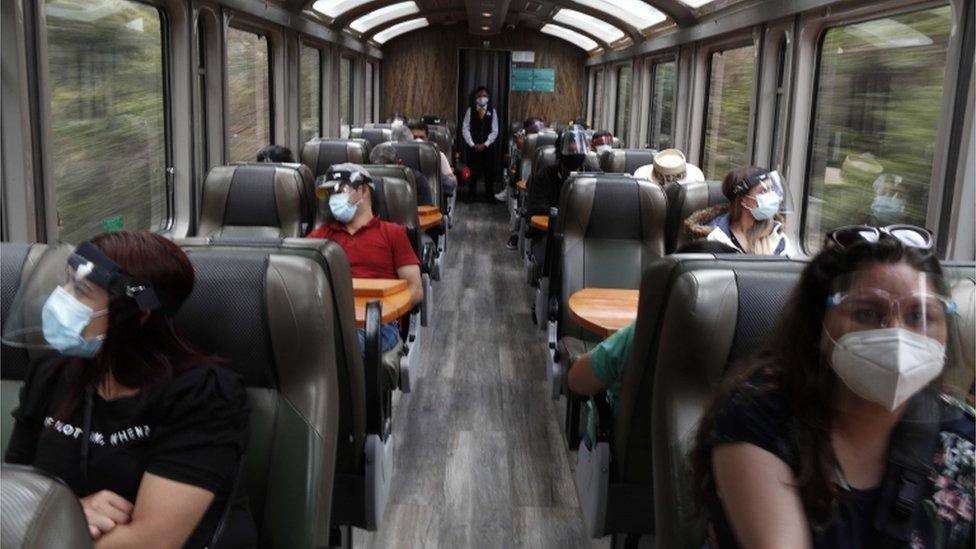
Tourists travelled to the site on Sunday for its reopening
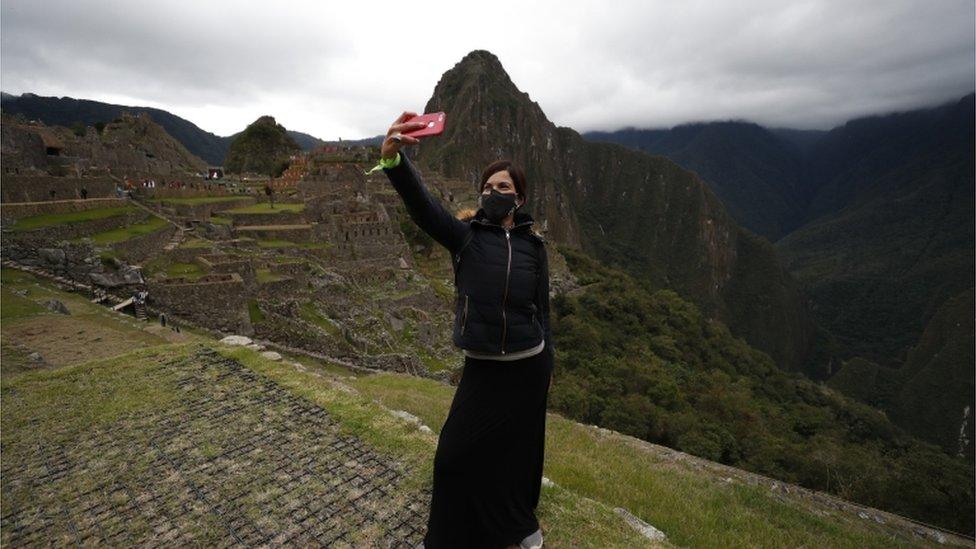
Only a limited number of tourists will be allowed in at once however, for safety reasons
One traveller was however able to visit the site during its closure. Japanese tourist Jesse Katayama had travelled to Peru to see Machu Picchu in March but was stranded nearby when lockdown measures were imposed.
Last month officials granted Mr Katayama permission to see the attraction after he submitted a special request.
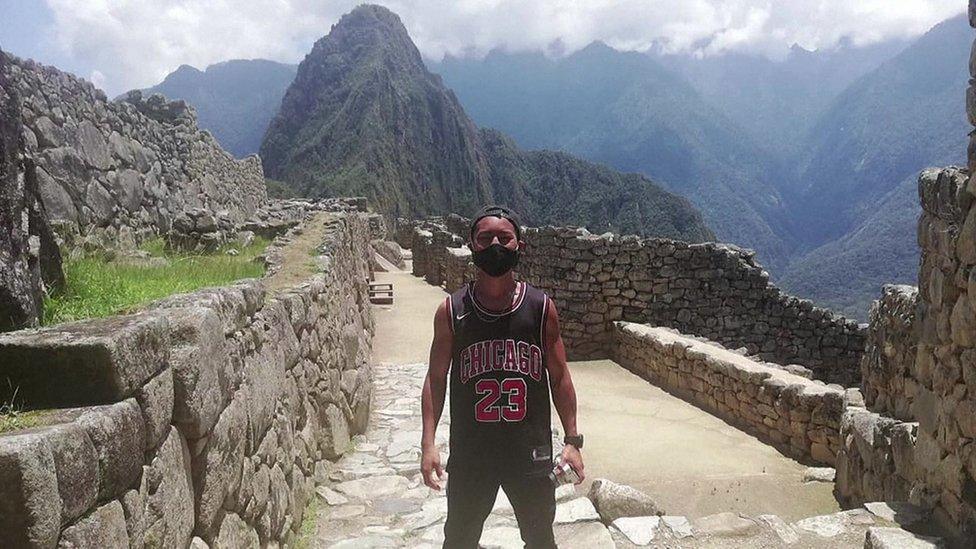
Jesse Katayama was originally due to visit Machu Picchu in March
- Published25 October 2020
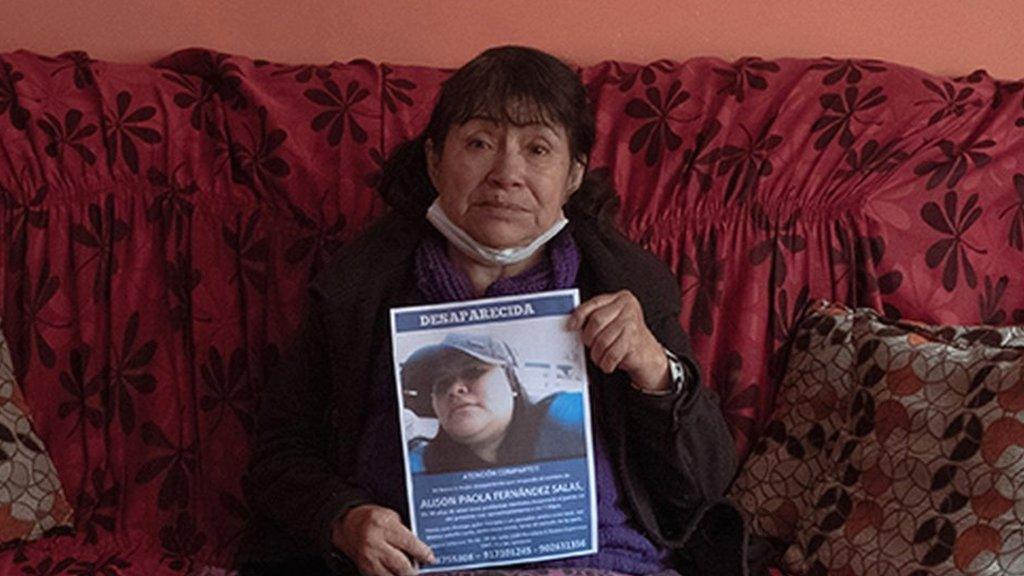
- Published13 October 2020

- Published16 June 2020
